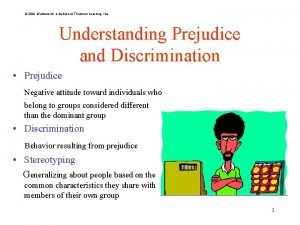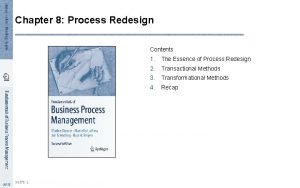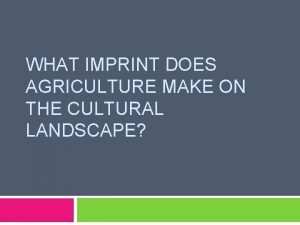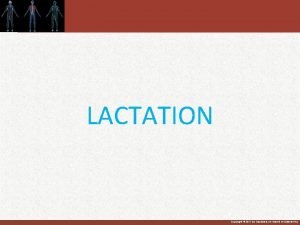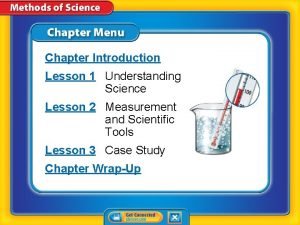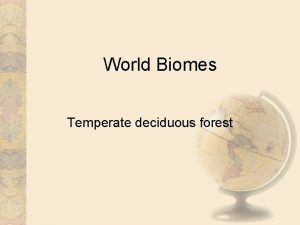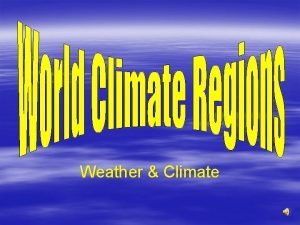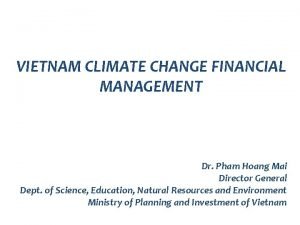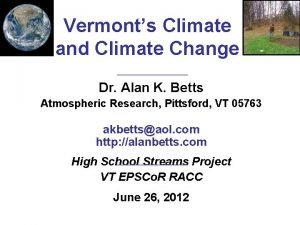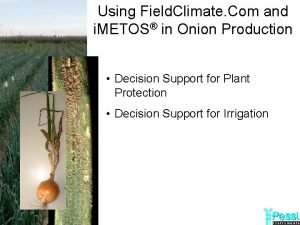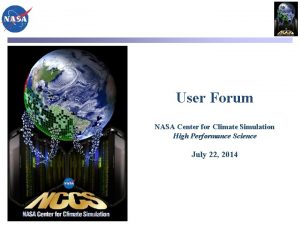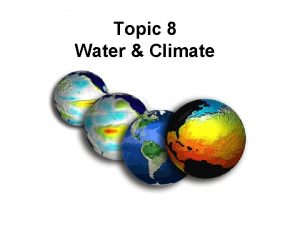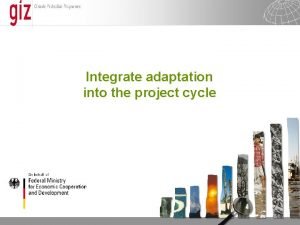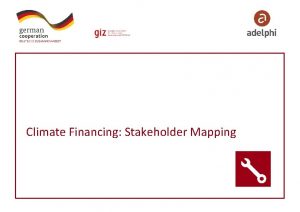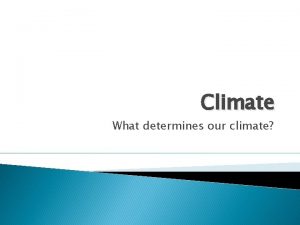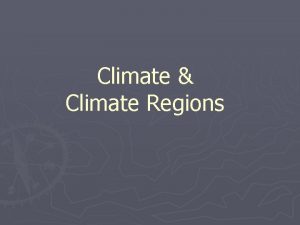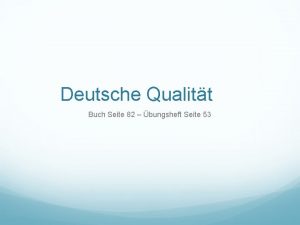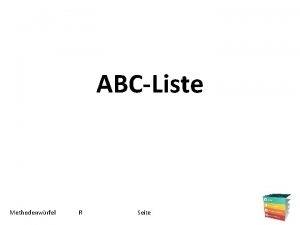Understanding Climate Science Seite Imprint As a federally








































- Slides: 40

Understanding Climate Science Seite

Imprint As a federally owned enterprise, GIZ supports the German Government in achieving its objectives in the field of international cooperation for sustainable development. Articles written by named authors do not necessarily reflect the views of the editors. Published by Deutsche Gesellschaft für Internationale Zusammenarbeit (GIZ) Gmb. H The Training « Integrating climate change adaptation into development planning» has been developed by the GIZ Climate Protection Program, on behalf of the Federal Ministry for Economic Cooperation and Development (BMZ) Dag-Hammarskjöld-Weg 1 -5 65760 Eschborn, Germany T +49 61 96 79 -0 F +49 61 96 79 -1115 Contact E climate@giz. de I www. giz. de Responsible Michael Hoppe, GIZ Author Barbara Fröde-Thierfelder Coordination Barbara Fröde-Thierfelder This module, part of the existing training “Integrating Climate Change Adaptation into Development Planning”, has been revised with additional financing from BMU. Photo credits © GIZ/Climate Protection Programme and Claudia Altmann, Dirk Ostermeier, Florian Kopp, Georg Buchholz, Ira Olaleye, Jörg Böthling, Manuel Hauptmann, Markus Kirchgessner, Michael Gajo, Michael Netzhammer, Nicole Herzog, Peter Korneffel, Richard Lord, Robert Heine, Rüdiger Behrens, Ulrich Scholz, Ursula Meissner, Uwe Rau Design Ira Olaleye 30. 09. 2020 Seite 2 Page

Terms of use This training module has been developed by GIZ on behalf of BMZ and BMU. If you would like to adapt this presentation to your needs, please respect the following terms of use: § The slide master and imprint are mandatory. They may neither be altered nor removed from the presentation. § The GIZ logo must not be moved or removed. No other logos or further information may be placed in the header or footer area. § If you wish to add your own content, please use the blank slide at the end of this presentation. (You can copy it to add slides. ) § If you would like to make substantial changes to the content of this presentation, please contact climate@giz. de. 30. 09. 2020 Seite 3 Page

Overview § Definitions § Recap on the basics § Greenhouse effect § Carbon cycle § Emissions – sources of the anthropogenic climate change § Scientific analyses § Emission scenarios (IPCC SRES 2001 – IPCC AR 5) § Global climate models § Regional climate models § Information needs for decision-making § Sources of uncertainty § Dealing with scepticism Exercise § Interpret climate information Case work § Reflection 30. 09. 2020 Seite 4 Page

Definitions § Weather the state of the atmosphere at a given time with regard to temperature, rainfall, wind, etc. § Climate the average weather over a period of time (e. g. 30 years) in a region § Climate variability variations in the mean state of the climate, generally natural/historic § Climate change (IPCC 2007): change in climate over time, whether due to natural variability or human activity (UNFCCC): a change of climate which is attributed directly or indirectly to human activity that alters the composition of the global atmosphere and which is in addition to natural climate variability observed over comparable time periods. 30. 09. 2020 Seite 5 Page

Recap on the basics Seite

The greenhouse effect Source: Climate Change 2007. The Physical Science Basis. IPCC Working Group 1. Contribution to AR 4 30. 09. 2020 Seite 7 Page

The radiative balance Source: IPCC. 2001 30. 09. 2020 Seite 8 Page

The carbon cycle: stocks and flows Source: World Development report. 2010. Focus A: The science of climate change. Adapted from IPCC. 2007 30. 09. 2020 Seite 9 Page

Source: http: //ema. bonn. de/klima/bilder/800 px-Vostok_Petit_data_svg. png Dealing with scepticism: is the recent climate change natural or anthopogenic? -I °C ppmv today -> tousands of years ago 30. 09. 2020 Seite 10 Page

Dealing with scepticism: is the recent climate change natural or anthopogenic? -II 02/2012: 393, 65 ppm tousands of years ago <- today Sources: World Development report 2010. p 4; http: //www. esrl. noaa. gov/gmd/ccgg/trends/ 30. 09. 2020 Seite 11 Page

Source: http: //maps. grida. no/go/graphic/world-greenhouse-gas-emissions-by-sector 1 World GHG emissions by sector (2000, CO 2 eq. ) Drivers of global warming: Emissions Energy total: 61, 4% 30. 09. 2020 Seite 12 Page

Effects of climate change: overview Climate stimuli § change in temperature patterns § change in precipitation patterns § increase in extreme weather events (storms, heat waves. . . ) § melting of pole caps, glaciers and permafrost § sea-level rise § droughts Impacts § droughts § change of natural systems’ productivity § increase in forest fires § exceptional floods § loss of land § health issues §. . . § food insecurity § loss of income §. . . -> vulnerable livelihoods -> economic damages 30. 09. 2020 Seite 13 Page

Effects of climate change: impact chains 30. 09. 2020 Seite 14 Page

Scientific analyses Seite

Scientific approach Emission scenarios Climate models 23 GCM in IPCC Downscaling Climate scenarios Impact / vulnerability analysis Local knowledge and experience Source: http: //upload. wikimedia. org/wikipedia/commons/thumb/4/4 a/Global_Atmospheric_Model. jpg/350 px. Global_Atmospheric_Model. jpg ; http: //www. wmo. int/pages/themes/climate/images/figures/Climate. Modelnesting. jpg http: //www. dkrz. de/bilder-klimaforschung/T 2 M_A 1 B_2030_2060_2085 ano 1961 -1990_globe_en. jpg 30. 09. 2020 Seite 16 Page

Emissions scenarios – different storylines for our future Underlying assumptions (IPCC SRES 2001) A 1 Fl A 1 B A 1 T Source: www. bom. gov. au/info/climate/change/gallery/images/74. gif http: //www. grida. no/publications/other/ipcc_sr/? src=/climate/ipcc/emission/008. htm 30. 09. 2020 Seite 17 Page

Emissions scenarios – different storylines for our future Variability between individual model outputs/scenario Variabilitiy between scenarios Source: IPCC 2007 30. 09. 2020 Seite 18 Page

Representative Concentration Pathways - part of the development of new scenarios (b) Energy and industry CO 2 emissions for the RCP candidates Source: RH Moss et al. Nature 463, 747 -756 (2010) (a) Changes in radiative forcing (relative to pre-industrial conditions) 30. 09. 2020 Seite 19 Page

Global climate models/ general circulation models Sources: www. wmo. int/pages/themes/climate/images/figures/Climatemodelresolutions. jpg ttp: //www. ipcc-data. org/ddc_gcm_guide. html , 30. 09. 2020 Seite 20 Page

Source: RH Moss et al. Nature 463, 747 -756 (2010) Major processes addressed in climate models 30. 09. 2020 Seite 21 Page

Regional climate models Source: http: //www. wmo. int/pages/themes/climate/images/figures/Climate. Modelnesting. jpg 30. 09. 2020 Seite 22 Page

Climate Scenarios Source: IPCC 2007 30. 09. 2020 Seite 23 Page

Local climate knowledge 30. 09. 2020 Seite 24 Page

Dealing with uncertainty Part 1: understanding the fundamental limitations of decisionmaking Part 2: Managing uncertainty -> will be discussed in Module C Seite

Information needs for decision making Policy makers want to know… Information we can provide (within certain limits) … What will happen? Trends for specific climate stimuli (-> be careful about details) Where? Geographic extent and resolution (-> difficult for smaller scales) When? Time frame (-> makes a big difference whether by 2020 or 2100) How certain? Confidence level, i. e. validity of data, agreement in analysis, probability of results 30. 09. 2020 Seite 26 Page

What we know: climate change is real Example: Rapid Arctic Sea-Ice Decline (Notz 2010 after Stroeve et al. 2007 GRL) 30. 09. 2020 Seite 27 Page

What we know: climate change is real Example: Muir glacier, Alaska Source: Fragile Earth. Views of a changing world. http: //www. bartholomewmaps. com/fragileearthnew/inside_the_book. htm 30. 09. 2020 Seite 28 Page

What we know: climate change is real Example: Kilimanjaro snow cover, Tansania Source: NASA Earth Observatory http: //ocrl. kordi. re. kr/directory/20021224 e. html 30. 09. 2020 Seite 29 Page

What is uncertain: the complex background for decision-making Basis of understanding § Models are representations of the Earth’s system, not portrait pictures § Limited data availability, esp. at regional/local scale § Limited data quality, esp. at regional/local scale § Confidence levels of projections – inherent uncertainty Development of GHG emissions § Depends on decisions today Extent of change and vulnerability § Influenced by the socio-economic and ecological state (sensitivity and adaptive capacity) AND § Climate trends (exposure) 30. 09. 2020 Seite 30 Page

Sources of uncertainty: Emission scenarios versus model outputs Source: IPCC 2007 30. 09. 2020 Seite 31 Page

Exercise “Dealing with scepticism” Seite

Introduction to the exercise Working time: 10 min in total! § Everybody receives one set of information § Statement by a climate change sceptic OR § Possible answer by a climate change expert § Find together in the matching pairs § Discuss the statement, and together develop arguments for a climate change “defender” § Prepare a very short presentation to the plenary <1 min 30. 09. 2020 Seite 33 Page

Case work “Interpreting climate information” Seite

Introduction to the case work Context Working time: • 3 x 10 min/exhibit • 10 min/summary § Government of Zanadu: NDP should reflect climate change adaptation priorities § Government has established a climate change advisory group your working group Your task § Examine exhibits § What does this specific information tell you about rainfall and temperature – what not? § Summary § Go back to your first board § Summarise findings (overlaps and different opinions) and discuss implications of your findings on agriculture and water sector § Prepare a presentation to the plenary <5 min 30. 09. 2020 Seite 35 Page

Historic data Source: GIZ 30. 09. 2020 Seite 36 Page

Downscaled model temperature projections Source: GIZ 30. 09. 2020 Seite 37 Page

Regional scatter plots Source: GIZ 30. 09. 2020 Seite 38 Page

Reflection § 1 st round § What is my take-home message? § 2 nd round § How can I improve my daily work through the newly acquired knowledge? 30. 09. 2020 Seite 39 Page

Title Text This slide is not part of the original version of the training material. It was added by [please insert institution]. 30. 09. 2020 Seite 40 Page
 Federally protected classes
Federally protected classes Federally protected classes
Federally protected classes Civil rights training quiz answers
Civil rights training quiz answers Federally protected classes
Federally protected classes Präsentationsapp
Präsentationsapp Schlusswort hochzeitszeitung
Schlusswort hochzeitszeitung Alfred kubin die andere seite
Alfred kubin die andere seite Heuristic process redesign
Heuristic process redesign Imprint culture
Imprint culture Imprinting psychology
Imprinting psychology Thermal nil
Thermal nil Imprint culture
Imprint culture Step and flash imprint lithography
Step and flash imprint lithography Which disciple wanted to see the imprint of the nails
Which disciple wanted to see the imprint of the nails Saunders (imprint)
Saunders (imprint) Climate change 2014 mitigation of climate change
Climate change 2014 mitigation of climate change What is your favorite subject and why science
What is your favorite subject and why science Understanding science lesson 1 answer key
Understanding science lesson 1 answer key Lesson 1 understanding science answer key
Lesson 1 understanding science answer key Lesson 2 measurement and scientific tools answer key
Lesson 2 measurement and scientific tools answer key Social science vs natural science
Social science vs natural science What are the branches of natural science
What are the branches of natural science Natural science vs physical science
Natural science vs physical science Applied science vs pure science
Applied science vs pure science Natural science and social science similarities
Natural science and social science similarities Think central k5
Think central k5 Rule of 70 in population growth
Rule of 70 in population growth Windcube lidar
Windcube lidar Soft science definition
Soft science definition Settlement patterns
Settlement patterns Temperate deciduous climate
Temperate deciduous climate Climate change paragraph
Climate change paragraph Factors affecting their climate
Factors affecting their climate Humid subtropical climate
Humid subtropical climate Latitude climate zones
Latitude climate zones Climate of vietnam
Climate of vietnam Vermonts climate
Vermonts climate Regions de vegetation du canada
Regions de vegetation du canada Field climate metos
Field climate metos Nasa center for climate simulation
Nasa center for climate simulation Percolation vs infiltration
Percolation vs infiltration



